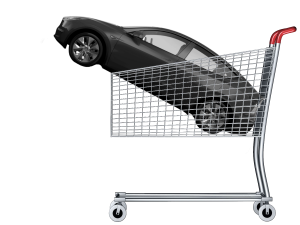If the adoption of electric transportation is not advancing as quickly as you’d like, I recommend becoming an EV activist.
No, I’m not advocating for protests or anything confrontational, just positive reinforcement. Here are a few examples:
If you visit an establishment that has installed electric vehicle charging, make sure they know you appreciate it. Ask for the manager and let them know that part of the reason you selected their establishment was the charger and thank them for supporting EV drivers. This is especially important at locations where you expect to spend some time, like restaurants, shopping malls, movie theaters, public parks and, most importantly, hotels.
Hotels are a critical location for Level 2 chargers, because they help enable long-distance EV road trips. While DC Fast Charging infrastructure is being rolled out, Level 2 charging, which is much less expensive to install, can overcome the fact that it’s slower than DCFC, because you’re going to charge while you sleep. When planning a road trip, where you’ll need to stop at a hotel, call ahead and ask if their establishment has a charger that will work with your EV. If they don’t, make sure you tell them that you would have stayed with them, if only they had a charger. If possible, speak to a manager so your message isn’t lost on a front desk employee, who may not have the same motivation to drive occupancy as a manager does. The more we do this, the more chargers will be installed and the faster EV adoption will occur. These hotel managers will make sure upper management, in the corporation, gets the message because they all want (and are probably compensated on) a high occupancy rate. You might even let the manager know about Federal and state incentives for installing EV chargers, if you’re aware of those programs. It’s important to also let them know how little it costs to charge an EV. At 13¢ per kWh, it only costs about $1 per hour to charge at Level 2 and a hotel that typically has 100 vehicles stay overnight may only need 3 chargers to support EV drivers today. Their facility’s charging capacity can be increased, in an affordable, predictable way, as EV adoption continues to grow.
In planning the route for a documentary/TV series The EVangelist team is going to produce, I reduced the time impact of stopping to charge our EV by planning to stop to charge at DC fast chargers only once per day, preferably when we stop for a meal or make a presentation. This effectively “hides” the charge time by embedding it in an activity that would prevent us from driving anyway. The trip we’re planning is from Denver, Colorado to Olympia, Washington and back again. The second charge each day would occur at the hotels where we plan to stay overnight. Due to stops to shoot footage for the show, we plan to drive between 400 and 500 miles per day, over about 8 to 10 hours. Add in shooting time and each day will be a marathon of up to 14 hours. The way we’re planning to charge takes advantage of planned downtime in these very busy days.
If you are looking for a new home, make sure you let the realtor/apartment locator service know that you’d prefer a home that has EV charging already installed (especially if you’re looking at multi-family housing) or 240V outlets in the garage, if you’re looking for a house. Even if you can charge at work and don’t really need to charge at home, by making your preference known to someone with an economic interest in helping you locate a home, you’re making them aware of a need of which they may have been completely oblivious. Remember, most people with whom you come into contact have never driven an electric vehicle or have any understanding of the needs of an EV driver. Once they realize their income can be enhanced by residences having chargers, they’ll make it known to their clients, the managers/owners of these properties, that EV charging is becoming a desireable amenity. Talk about them as the “granite countertops of the 2020s.” A side benefit, if you’re looking for a residence with a garage, is that you don’t have to worry if the electric panel can support the addition circuit(s) your EV will need, because it’ll already be EV-ready! Even if you’re looking to build your new home, make sure the builder’s sales agent knows you want to have sufficient electric service and outlets in your new garage.
As we all emerge from the pandemic quarantine, retail establishments are anxious for customers to start going to movies, dining out and returning to bars and nightclubs. Letting managers of these types of establishments know they can have a competitive advantage over businesses that don’t have chargers is important. EV owners are perceived to have higher incomes and education and attracting that clientele is important to these businesses.
Get involved in civic planning. If your town is creating a new park or other public facility, lobby for charging at the location. Many municipalities are struggling with reducing air pollution and/or their carbon footprint. Supporting EV adoption is an interest you both share. People using the park during the day can add some range while making use of the facility. Chargers at public locations can also be used by people who cannot charge at home, during off-peak electric service hours. Contacting local politicians about this will help, as climate change becomes more prominent in political discourse. Even those who deny climate change may be swayed by the argument that they’ll be supporting local jobs (you can’t install an EVSE over the Internet) as well as American manufacturing (of both the chargers and the vehicles) instead of letting foreign manufacturers take over these critical markets.
One other point I’ve made to local politicians and chambers of commerce, is that small towns, in the 19th century prospered, if they had a resource needed by the railroads, like water, coal or wood. Having the railroad come through your town meant more visitors and infrastructure for local businesses to ship their goods out or to bring needed goods in. Similarly, in the 20th century, towns through which interstate highways passed, prospered from visitors stopping to dine or refuel. The highways gave the town a chance to show off its attractions and businesses to a new audience every day. In the 21st century, having EV charging infrastructure, in your small town, will cause EV drivers to route their trips through your location and give your businesses a chance to gain new customers.
The bottom line is basically this: “You can’t always get what you want, but if you try sometime, you just might find, you get what you need.”
Remember the adage: “The squeaky wheel gets the grease.”
#electricvehicle #evcharging #EVadvocacy #MEVJ #TheEVangelist #TxETRA #texasEV #EVroadtrip



